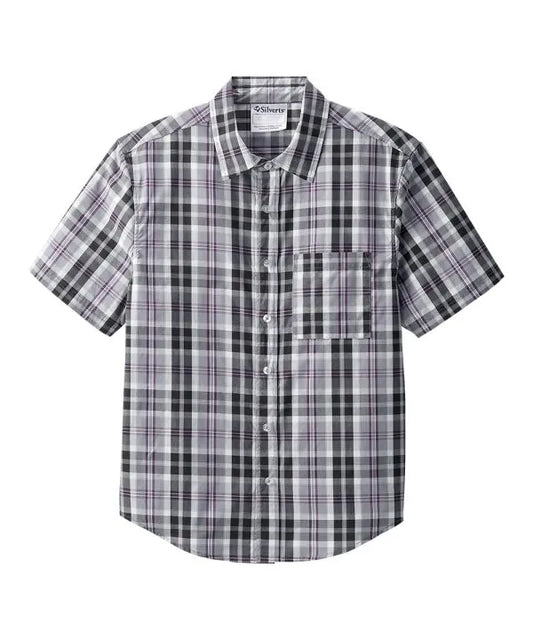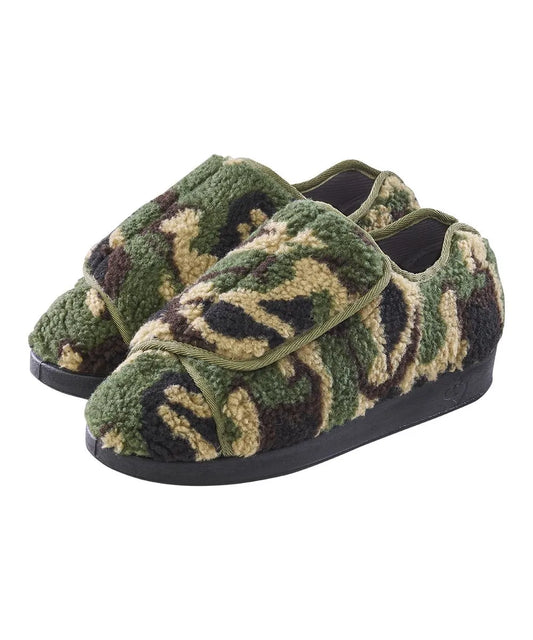Written and reviewed by Lourdes Duah
A shopping trip can take a lot of effort, especially for consumers with disabilities. Shopping environments aren’t always made with consideration for shoppers with disabilities or mobility issues, so navigating these environments can be exhausting, frustrating, or simply not worth the time and effort.
Brands are making strides toward inclusivity, but there is still a long way to go. Barriers to accessibility exist all across the industry, from product design to production to purchase. Of course, these problems won’t be solved overnight; true inclusivity will require many long-term changes and shifts in mindset. Still, there are plenty of ways for the industry to improve the experience of those with disabilities in the meantime.
Here's how to make shopping more accessible for people with disabilities.
Designing Clothes for People with Disabilities
For people with disabilities to feel more included in fashion, the industry has to produce clothing that suits their needs. A lot of mainstream clothing simply isn’t designed with consideration for those with disabilities or limited dexterity.
Fastenings are a common difficulty for people with disabilities and mobility issues. The wrong closures can make many clothing items difficult or even impossible to wear. Adaptive fashion commonly has features like magnetic buttons, magnetic zippers, or Velcro fastenings that make clothes easier to put on and take off. For example, JuneAdaptive sells this magnetic-buttoned shirt and these side-opening pants that are easier to operate for shoppers with limited hand dexterity. Designing with disability in mind can start with these common features of adaptive clothing.

Men's Short Sleeve Shirt with Magnetic Buttons

Women's Comfort Pants with Full Side Seam Snap Closures
Some adaptive fashion focuses more on practicality than looks, going for basic colours and fits with more focus on accessibility features. These clothes are useful but brands have a real opportunity to go beyond the basics. For a lot of people, fashion is a form of self-expression that can improve mood and confidence. For people with disabilities to have the option to express themselves through style, they need options that suit their tastes as well as their ability. This means designing adaptive clothing in various prints, styles, and shapes that let customers choose what suits them best. For example, this magnetic zipper vest by JuneAdaptive comes in four different reversible patterns, giving buyers up to eight looks to choose from. Expanding the variety of styles in adaptive fashion will open up options for shoppers.


Women’s Reversible Front Vest with Magnetic Closure
Access to Adaptive Clothing
A company can make the best adaptive wear in the world but if the people who need it most can’t access it, they can't use it. High costs are one way that a well-intentioned product or service can become inaccessible. People criticized Nike’s Go FlyEase shoe, an adaptive hands-free sneaker, for this reason. After an initial release to select Nike members, multiple resellers got a hold of the shoes and sold them for a higher cost, pricing out the shoppers with disabilities that the shoes were originally made for. Finding ethical ways to reduce cost is easier said than done, but it goes a long way to ensuring that people who need adaptive clothing will be able to purchase it.
Being able to find and obtain adaptive clothes is another important factor in keeping them accessible. A customer can’t buy the right product for them if they don’t know it exists or it’s not available in their area. Adaptive clothes can sometimes be seen as a niche market which can make them harder to find without knowing exactly where to look. Slick Chicks, an adaptive underwear brand, started working with major retailer Aerie for this reason. “The goal for us has always been how do we get this out there to people who need it,” said Slick Chicks founder Helya Mohammadian. “We’re offering a solution; it doesn’t make sense if we keep it niche.”
The more common adaptive clothing becomes and the more places that can offer it at a reasonable price, the more accessible it will be.
Better Representation for People with Disabilities
Lack of representation majorly excludes people with disabilities from fashion. This is another problem that exists at multiple levels in the industry.
A Forbes article stated that many brands adding adaptive wear to their product lines stick to tried and true features like sewn-in magnets. But according to Sky Cucacub, founder of adaptive clothing brand Rebirth Garments, this can go wrong if it’s done incorrectly or if the product goes to market without testing on people with disabilities. Sky stresses the importance of input from people with “lived experience” during the design process. Ultimately, people with disabilities know best what works and doesn’t work for them. A variety of their lived experiences must be valued and included in the design process so that the final product can serve the community it’s meant for effectively.
Representation is important in marketing as well. This is another area where Nike’s Go FlyEase shoes got backlash. Critics said the product’s marketing mostly showed (seemingly) able-bodied consumers, yet rarely showed people with disabilities and rarely stated that this was who the shoe was designed for. Some say marketing the Go FlyEase as a shoe for every ability will help normalize adaptive fashion, leading to more brands creating adaptive options. But others say that refusing to talk about disability when marketing adaptive wear contributes to the negative stigma and erasure of people with disabilities.
It can be difficult for people with disabilities to feel included in fashion culture if brands refuse to depict or acknowledge them. Greater visibility at every level of the industry can go a long way to creating more inclusive environments and effective clothing options.
Easy Access to Accessibility Information
A major component of accessible shopping is simply knowing what options a shopper with a disability has at any given store. When brands don’t make this information obvious, consumers must attempt to find this information themselves. This may require much more research than a consumer without a disability would normally have to do.
Another Forbes article listed some of the questions a shopper with a disability may have to spend much more time researching; whether a product, service, or location is accessible, the possibility to adapt a product to better suit one’s needs, and whether those alterations are cost-effective are all extra research questions that can be hard to find answers for. The article also mentioned that consumers may have to try to research this information on websites that aren’t accessible, making the process even harder.
Forbes suggests that companies make accessibility information about their products as easy to find as possible. No customer wants to spend an unreasonable amount of time researching a potential purchase. Easy-to-find accessibility information can ease the process. It also enables retail staff to better advise customers with disabilities on what will work for them.
Consumers with disabilities know not every product may be suitable for them. Readily available information prevents them from wasting time and energy on inaccessible products and gets them closer to products that will suit them.
Store Layout
The physical layout of a shop is major for accessibility. Not being able to freely move around and interact with a store immediately lowers the quality of a customer’s experience.
The European Journal of Disability Research created a report about the barriers people with disabilities face in shopping malls. The report involved interviews with people with disabilities, shopkeepers, and rehabilitation workers. The participants gave several suggestions for environmental changes that would make it easier to go to the mall. Here are some of the improvements they suggested:
- Larger fitting rooms
- Removable digital payment devices
- Lowered checkout counters for people using different-sized wheelchairs
- Adapted maps of the mall in Braille for customers with visual impairments
- Larger signage for navigation by customers with visual impairments
- Easy-to-find elevators with Braille labels or voice activation
- Rental services for technical aids
- Conveniently located, reasonably sized accessible washrooms
- Wider store isles
- Lower music volume
- Reserved or adapted cash registers
- Prices in spots that are easy to see
- Placing products in spots that are easiest to reach
These changes can make shopping malls easier to navigate and provide a better experience overall.
Courtesy from Salespeople
Another section of the report from The European Journal of Disability Research mentioned that kind and courteous staff are vital for an enjoyable mall experience. Several interviewees with disabilities rated courteous salespeople as both the most important part of the shopping process and the one that major retailers tend to get right most often. Respondents said that most staff are kind and willing to help, but don’t always know the best ways to help.
Gus Alexiou's article on Forbes suggested funding basic disability etiquette training for retail staff. This could keep the staff from falling into common pitfalls like purposely speaking slower, speaking to an aide or caregiver instead of the person with a disability, or assuming someone needs or wants assistance. Some respondents also suggested employing a resource person in malls, working with people who live with disabilities, or working with rehabilitation workers to find more solutions.
Education was a common thread for suggestions on how to make salespeople more effective. Most staff want to give customers with disabilities a good shopping experience. Having the right information makes this possible.
There is plenty more that can be done to make shopping malls more accessible. Some changes, like changing construction layouts, may take time. Others are as quick and simple as kindness from the retail staff. Each improvement is another step towards true inclusivity and creates faster, more effective, and more enjoyable shopping experiences for people with disabilities.















